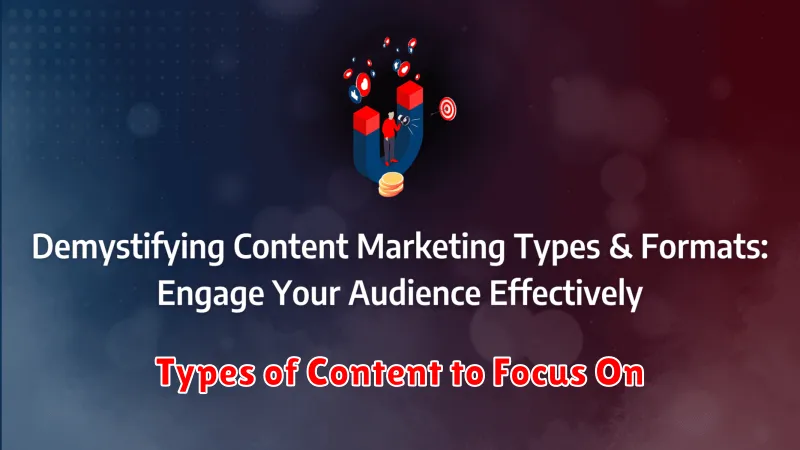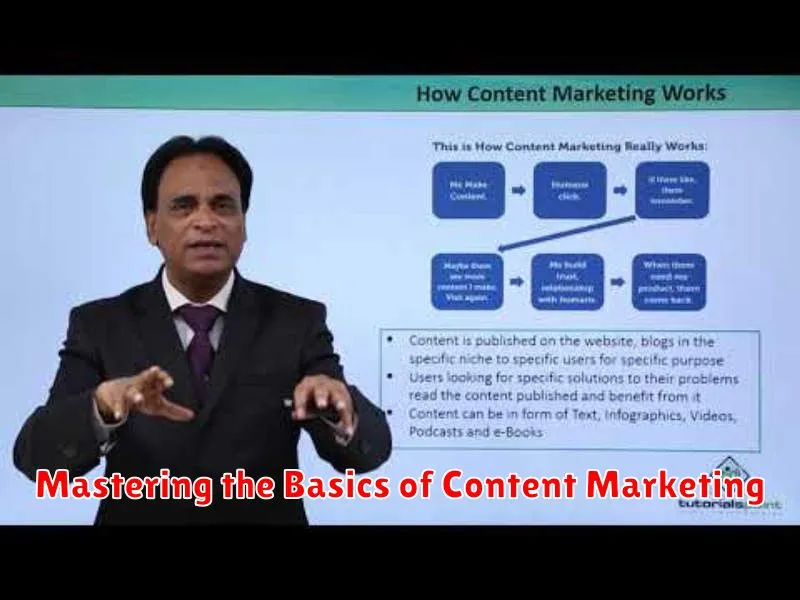In today’s digital landscape, content marketing plays a pivotal role in connecting with audiences, building brand loyalty, and driving business growth. Mastering the basics of content marketing is essential for any organization seeking to establish a strong online presence and achieve its marketing objectives. This involves understanding core concepts, developing effective strategies, and utilizing the right tools to create and distribute engaging, valuable content that resonates with your target audience. Whether you are a seasoned marketer or just starting out, a solid foundation in content marketing fundamentals is crucial for success.
This article will provide a comprehensive overview of the basics of content marketing, equipping you with the knowledge and insights needed to create a successful content marketing strategy. We’ll explore key elements such as defining your target audience, establishing content pillars, crafting compelling content formats, and leveraging various content distribution channels. By understanding these foundational elements of content marketing, you can effectively engage your audience, enhance brand visibility, and drive measurable results. Join us as we delve into the essential principles of content marketing and empower you to create a thriving online presence.
What Is Content Marketing?
Content marketing is a strategic marketing approach focused on creating and distributing valuable, relevant, and consistent content to attract and retain a clearly defined audience — and, ultimately, to drive profitable customer action.
Instead of pitching your products or services directly, you provide truly relevant and useful information to your target audience. This helps establish you as a credible expert in their eyes and builds trust over time. The goal isn’t immediate sales, but rather long-term relationship building that leads to organic conversions.
Content can take many forms. Think blog posts, articles, videos, infographics, podcasts, e-books, white papers, and social media updates. The key is to choose formats that resonate with your audience and align with your business goals. Effective content marketing is not about pushing promotional material, but about delivering information that educates, entertains, or solves a problem for your prospects.
Why It Matters in 2025
In 2025, content marketing will remain a cornerstone of successful digital strategies. The sheer volume of online information will continue to grow exponentially, making it even harder for businesses to cut through the noise and reach their target audiences. Effective content marketing will be the key differentiator, enabling brands to establish thought leadership, build trust, and drive meaningful engagement.
Consumers are increasingly seeking valuable, informative content that addresses their specific needs and pain points. Generic marketing messages will simply be ignored. Personalized, targeted content delivered across multiple channels will be crucial for capturing attention and fostering lasting relationships with customers.
Furthermore, search engine optimization (SEO) will continue to evolve. Content creators will need to adapt to algorithm updates and prioritize creating high-quality, user-centric content to maintain visibility and drive organic traffic. Understanding search intent and delivering relevant, insightful information will be essential for ranking well in search results.
Types of Content to Focus On

Blog posts are a cornerstone of content marketing. They allow you to explore topics in depth, providing valuable information to your target audience. Focus on creating informative, engaging, and well-researched blog posts that answer relevant questions and establish you as an industry authority.
Infographics present data visually, making complex information easily digestible. They are highly shareable and can significantly boost your brand’s visibility.
Videos offer a dynamic way to connect with your audience. From product demonstrations to behind-the-scenes glimpses, videos can be tailored to various purposes and platforms.
Case studies showcase your successes by highlighting specific client stories and demonstrating the value you provide. They build trust and credibility with potential customers.
Ebooks and white papers offer in-depth analyses of specific topics. These long-form content pieces provide valuable information to your audience and can be used as lead magnets to generate leads.
Content Planning and Strategy
Content planning and strategy form the backbone of effective content marketing. A well-defined strategy ensures your content aligns with your overall marketing goals and resonates with your target audience.
Begin by clearly identifying your target audience. Understand their needs, preferences, and online behavior. This knowledge will guide your content creation process.
Next, establish clear content marketing goals. These could include increasing brand awareness, driving website traffic, generating leads, or boosting sales. Measurable goals are crucial for tracking progress and demonstrating ROI.
A content calendar is an invaluable tool for organizing and scheduling content. It provides a structured approach to content creation and ensures consistent publishing.
Keyword research plays a vital role in optimizing your content for search engines. Identifying relevant keywords helps your target audience discover your content organically.
Finally, regularly analyze your content performance. Track key metrics like website traffic, engagement, and conversions. Use this data to refine your strategy and improve future content efforts.
Optimizing for SEO
Search engine optimization (SEO) is crucial for content marketing success. It helps your content rank higher in search engine results pages (SERPs), driving organic traffic to your website.
Keyword research is the foundation of SEO. Identify relevant keywords that your target audience uses when searching for information related to your content. Incorporate these keywords naturally within your content, including in the title, headings, and body text. Avoid keyword stuffing, which can negatively impact your ranking.
On-page optimization involves elements within your content. Optimize your title tags and meta descriptions to accurately reflect the content and entice users to click. Use header tags (H1-H6) to structure your content and highlight key information. Ensure your content is readable and engaging for both users and search engines.
Off-page optimization focuses on factors external to your website. Building high-quality backlinks from reputable websites is essential. Social media promotion and other online marketing activities can also contribute to off-page SEO.
Creating Value-Driven Content
Content marketing hinges on providing value to your target audience. This means creating content that addresses their needs, answers their questions, and helps them solve their problems. Instead of focusing on blatant promotion, concentrate on offering genuinely helpful information, insightful analysis, or entertaining experiences.
Understanding your audience is paramount. Conduct thorough research to determine their demographics, interests, and pain points. What are their challenges? What information are they seeking? By understanding their needs, you can tailor your content to resonate with them and establish your brand as a trusted resource.
Consider various content formats to deliver value effectively. Blog posts, articles, videos, infographics, and even interactive quizzes can all serve different purposes and appeal to different learning styles. Experiment to discover what resonates best with your audience and aligns with your marketing objectives.
Finally, ensure your content is high-quality. This means it must be accurate, well-written, and engaging. Poorly written or inaccurate content can damage your brand’s credibility. Invest the time and resources necessary to create content that truly provides value and strengthens your reputation.
Promoting Content Across Channels
Content promotion is crucial for maximizing reach and engagement. A multi-channel approach ensures your content connects with your target audience where they are most active.
Social media platforms offer powerful tools for sharing content, engaging with followers, and running targeted advertising campaigns. Tailor your message and format for each platform for optimal results.
Email marketing remains a highly effective way to distribute content directly to subscribers. Segmented lists allow you to deliver personalized content relevant to specific interests.
Consider leveraging search engine optimization (SEO) techniques to improve organic visibility. This involves incorporating relevant keywords and optimizing content structure to rank higher in search results.
Paid advertising can amplify your content’s reach. Platforms like Google Ads and social media advertising allow precise targeting and measurable results.
Analyzing Performance Metrics
Analyzing performance metrics is crucial for understanding the effectiveness of your content marketing strategy. It allows you to identify what’s working, what’s not, and where to focus your efforts for optimal results.
Key metrics to track include website traffic, engagement (likes, shares, comments), lead generation, and conversion rates. Monitoring these metrics helps you gauge audience interest and content performance.
Use analytics tools like Google Analytics to gather data and visualize trends. Regularly review your performance, comparing current data with previous periods to identify areas of improvement. For example, if a particular blog post receives significantly more traffic than others, analyze its content and promotion strategy to replicate its success.
By analyzing your performance metrics, you can make data-driven decisions to refine your content strategy, improve content quality, and ultimately achieve your marketing goals.
Repurposing Existing Content
Repurposing content involves transforming existing material into new formats to reach a wider audience and maximize your content marketing efforts. This cost-effective strategy extends the lifespan of your valuable content and reinforces your message across various platforms.
Consider turning a blog post into an infographic, a series of social media updates, or even a short video. A webinar can be repurposed into a downloadable guide or a series of email newsletters. Podcast episodes can be transcribed into blog posts or used as the basis for short, engaging video clips.
The key is to identify the core message of your existing content and then consider the different formats that would best suit that message for various platforms. This might involve minor edits or substantial restructuring, depending on the chosen format.
Repurposing isn’t simply copying and pasting. It requires thoughtful adaptation to ensure the content remains engaging and relevant for each specific platform and audience. By strategically repurposing your existing content, you can amplify your message, reach a broader audience, and maximize your return on investment in content creation.
Content Marketing Tools to Use
Effective content marketing often relies on utilizing the right tools. These tools can streamline your workflow, improve content quality, and enhance distribution efforts. Choosing the correct tools depends heavily on your specific needs and budget.
For content creation, consider grammar and style checkers like Grammarly or ProWritingAid. These tools help ensure error-free, polished writing. SEO tools are crucial for keyword research and optimization. Semrush and Ahrefs are popular choices for in-depth keyword analysis and competitor research. These can help your content rank higher in search engine results.
Social media management platforms such as Hootsuite or Buffer simplify scheduling and posting content across various platforms. They can also provide valuable analytics for tracking engagement and reach. For visual content creation, tools like Canva offer user-friendly interfaces for designing graphics, presentations, and other visual assets, even without advanced design skills.
Email marketing platforms such as Mailchimp or Constant Contact allow you to build email lists and create targeted email campaigns to nurture leads and promote your content. Finally, analytics platforms like Google Analytics are essential for tracking website traffic, content performance, and audience behavior. This data can inform future content strategy and optimize your overall marketing efforts.

